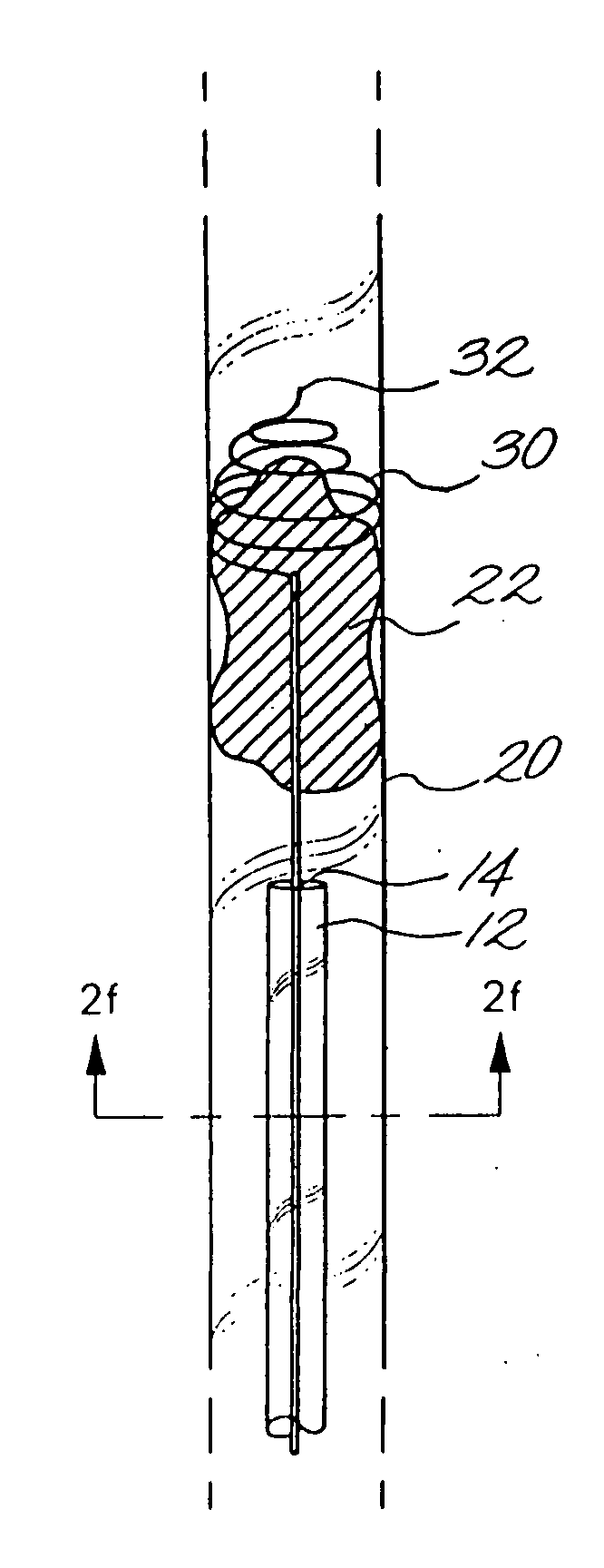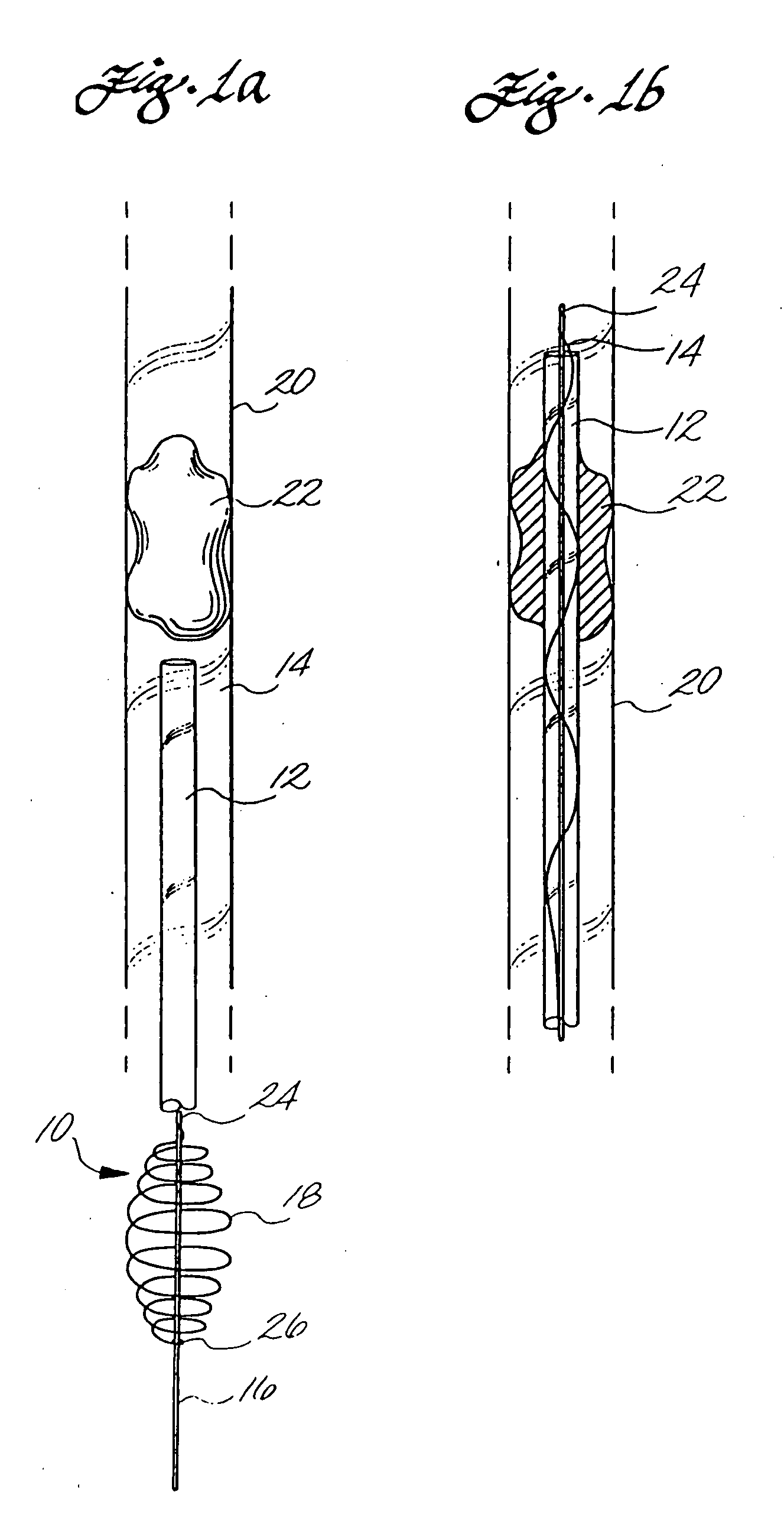Clot capture coil
a technology of clots and coils, applied in the field of medical devices, can solve the problems of tissue ischemia (lack of oxygen and nutrients), morbidity and mortality, stroke or even death, and the loss of limbs,
- Summary
- Abstract
- Description
- Claims
- Application Information
AI Technical Summary
Benefits of technology
Problems solved by technology
Method used
Image
Examples
example 1
[0071]The clot capture coil was clinically tested in pigs. In the first study a pig's femoral artery was isolated and a large commercially available introducing catheter was inserted into the femoral artery. Arterial blood was then withdrawn and allowed to clot in vitro.
[0072]An arterial catheter was then inserted through the introducing catheter and into the carotid artery. The coagulated arterial blood was then released into the carotid artery branches via the arterial catheter resulting in the formation of numerous emboli.
[0073]Angiography was used to locate the emboli. While performing angiography a microcatheter (outer diameter of 3 French and inner diameter of 1 French) was inserted into an occluded carotid artery using a guide wire for placement and standard microcatheter placement techniques. The microcatheter was advanced distally past the clot. The guide wire was then withdrawn from the microcatheter.
[0074]A shape memory clot capture coil connected to an insertion mandrel ...
example 2
[0077]The procedure of Example 1 was repeated using the shape memory clot capture coil configuration illustrated in FIG. 3. The clot was successfully corkscrewed and ensnared and removed from the pig's occluded cerebral artery.
example 3
[0078]The procedure of Example 1 was repeated using a shape memory clot capture coil as illustrated in FIG. 4. Because this embodiment has the coil extending proximally from the distal end of the insertion mandrel, the clot capture coil was directly inserted into the microcatheter without the use of a small introducer. A clot in an occluded carotid artery was ensnared in the coil and completely removed.
PUM
 Login to View More
Login to View More Abstract
Description
Claims
Application Information
 Login to View More
Login to View More - R&D
- Intellectual Property
- Life Sciences
- Materials
- Tech Scout
- Unparalleled Data Quality
- Higher Quality Content
- 60% Fewer Hallucinations
Browse by: Latest US Patents, China's latest patents, Technical Efficacy Thesaurus, Application Domain, Technology Topic, Popular Technical Reports.
© 2025 PatSnap. All rights reserved.Legal|Privacy policy|Modern Slavery Act Transparency Statement|Sitemap|About US| Contact US: help@patsnap.com



